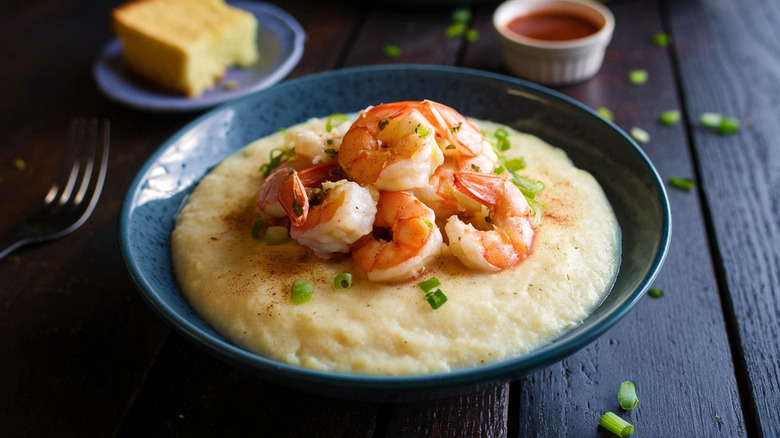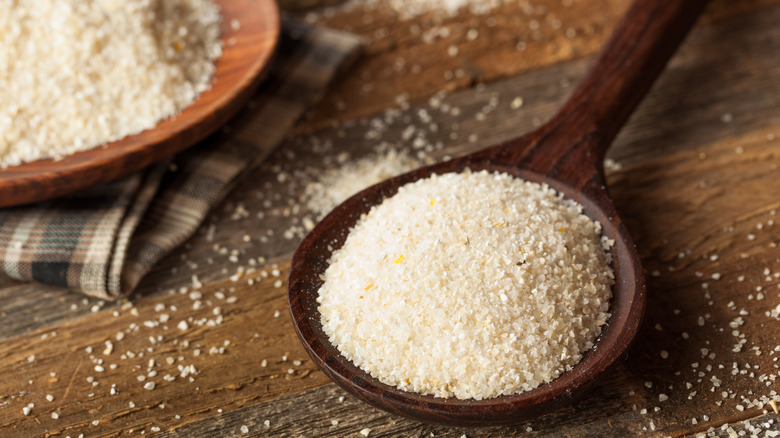What Makes Grits Different From Polenta?
Grits and polenta are culinary staples, but few people know what makes these corn-based foods different. While polenta was once considered fancy, grits have historically been a staple of the American South as a poverty food. (Though it's Iowa that grows the most corn in the U.S., not a Southern state.) Although these connotations have changed in recent years, it doesn't mean polenta and grits are the same, even though they are both foods that can be made in a rice cooker.
Polenta is a Northern Italian dish made from cornmeal derived from a specific variety of yellow flint corn called eight-row flint. The cornmeal for polenta is typically coarsely ground and has a dense, flaky texture when cooked. You can also often find rolls of pre-cooked polenta at stores or instant brands that can be rehydrated with hot water. On the other hand, grits are based on a Native American Muskogee dish and are made from white dent corn, which has a higher starch content than flint. Usually ground fine, grits have a creamier, porridge-like consistency when cooked. As a rule, the more finely grits are ground, the quicker they will cook.
Although grits and polenta can be used interchangeably in some recipes, grits must be stirred more often because they contain more starch. Moreover, replacing one with the other can impact the taste and texture of a dish, sometimes in ways you don't want. So, it's important to consider the outcome you're looking for before making a substitution.
How the differences between grits and polenta impact cooking
Although grits and polenta can be used similarly, which one you use will impact how your dish turns out. Take the classic shrimp and grits. While you can make shrimp and polenta, it won't have the same creamy base that grits would provide. Likewise, you can substitute grits for polenta, but the result won't be as thick or hold its shape as well. Moreover, polenta has a much more subtle flavor, giving chefs a bit of a blank slate to work with and add to. In contrast, grits retain a more robust corn flavor. While it isn't overpowering, it is something to consider, as it will impact how a dish tastes overall. That said, both grits and polenta can be sweet, savory, salty, or spicy, depending on how you season them.
Additionally, the coarseness of the grind will also make a difference. There are three particular types of grits that you need to remember. Stone-ground grits are whole kernels ground in a gristmill. They're the coarsest grits and have a toothsome texture and a more prominent corn flavor. Quick grits are ground fine for faster cooking, while hominy grits are a good textural middle ground with their hulls and germs removed. Similarly, while most cornmeal labeled as polenta is coarsely ground, you can use fine or medium-ground cornmeal in a pinch. However, regular cornmeal isn't the same as traditional polenta, and the consistency and taste will be different.

